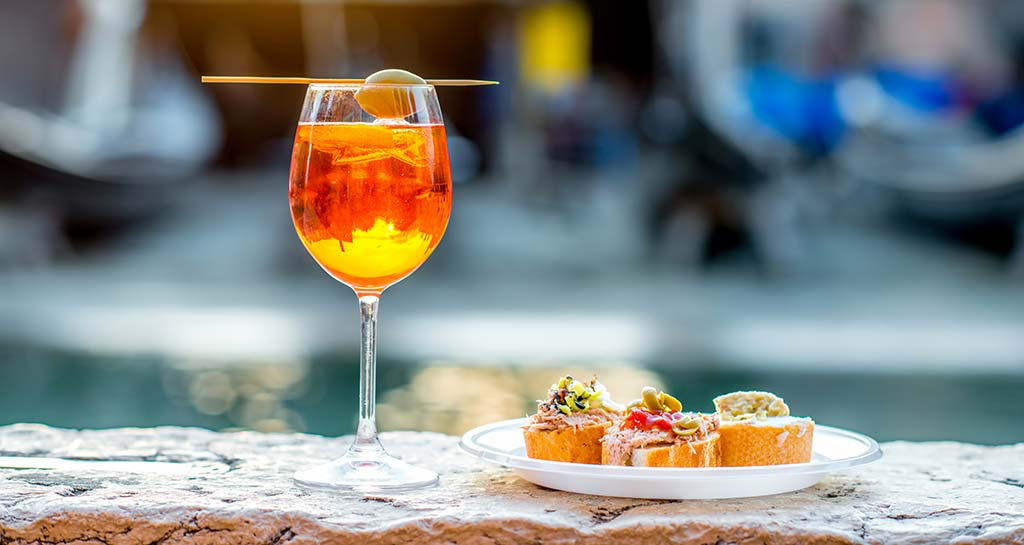The history of the “Aperitivo”
In Italy, you’ll typically see people out having a pre-dinner drink and light snacks between the hours of 6 – 8pm. This is known as “having Aperitivo”, an opportunity to come together with friends and family and stimulate the appetite before a meal, often involving bitter liqueurs or wines such as Aperol, Campari and Vermouth.
But where did this tradition come from?
Roman origins
“Aperitivo” comes from the latin ‘aprire’ (to open), capturing the essence of opening the stomach before eating. The early origins of “Aperitivo” are hard to trace but can be noticed in the ancient roman tradition of “Gustatio”. The members of the elite would meet and “open” their appetite before banquets and feasts with Mulsum, a highly alcoholic wine mixed with honey and flavoured with spices.
 Turin: the birthplace of modern Italian Aperitivo
Turin: the birthplace of modern Italian Aperitivo
While the romans planted the seed of this pre-meal social tradition, the “Aperitivo” as we know nowadays was born in Piedmont, Turin with the creation of Vermouth in 1786 by Antonio Benedetto Carpano. Vermouth is produced with white muscat wine and 30 herbs and spices including vanilla saffron and wormwood. Tasty and affordable, this cocktail became a popular drink that could be consumed by all social classes.
Its success increased even a few decades later thanks to the king of Italy, Vittorio Emanuele II, who loved vermouth and even made it the official aperitif of court.
Modern formulas
Later, in 1860, in Milan, Gaspare Campari invented the Campari, a red-bitter liqueur whose
carmine color was originally obtained by crushing the insects of the cochineal .
In the early 1900s, important new developments propelled the Aperitivo tradition in society. The Barbieri group invented in Padua the bright orange liqueur Aperol (but it was not successful until after the Second World War), and with the introduction of Soda water and Seltz, cocktails such as Negroni, Americano, Campari and Aperol Spritz were born.
A small assortment of Italian snacks
In combination with the aperitif you can enjoy various snacks such as olives, taralli, peanuts, bruschetta, cold cuts and cheeses. For those who are less inclined to the bitter taste of these drinks, a glass of wine or prosecco is just as acceptable! Each region and province has its own slight variation in the tradition of the aperitif, but it remains a proud aspect of Italian culture to not miss during your next trip to Italy!
To learn how to prepare the perfect Italian Aperitif and other recipes of Italian cuisine, take a look at this page!



